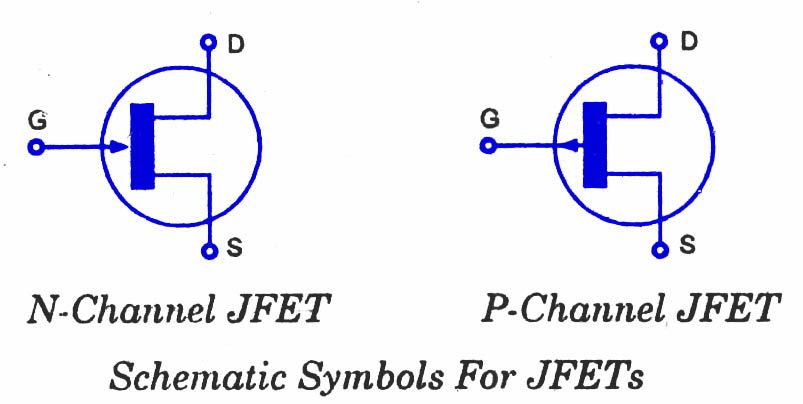Modes of operation
The operation of a MOSFET can be separated into three different modes, depending on the voltages at the terminals. In the following discussion, a simplified algebraic model is used that is accurate only for old technology. Modern MOSFET characteristics require computer models that have rather more complex behavior. For example, see Liu and the device modeling list at Designers-guide.org.
For an enhancement-mode, n-channel MOSFET, the three operational modes are:
Cutoff, subthreshold, or weak-inversion mode
When VGS <>th: where
Vth is the threshold voltage of the device. According to the basic threshold model, the transistor is turned off, and there is no conduction between drain and source. In reality, the Boltzmann distribution of electron energies allows some of the more energetic electrons at the source to enter the channel and flow to the drain, resulting in a subthreshold current that is an exponential function of gate–source voltage. While the current between drain and source should ideally be zero when the transistor is being used as a turned-off switch, there is a weak-inversion current, sometimes called subthreshold leakage.In weak inversion the current varies exponentially with gate-to-source bias
VGS as given approximately by:

, where
ID0 = current at
VGS = Vth and the slope factor
n is given by
n = 1 + CD / COX, with
CD = capacitance of the depletion layer and
COX = capacitance of the oxide layer. In a long-channel device, there is no drain voltage dependence of the current once
VDS > > VT, but as channel length is reduced drain-induced barrier lowering introduces drain voltage dependence that depends in a complex way upon the device geometry (for example, the channel doping, the junction doping and so on). Frequently, threshold voltage V
th for this mode is defined as the gate voltage at which a selected value of current I
D0 occurs, for example, I
D0 = 1 μA, which may not be the same V
th-value used in the equations for the following modes. Some micropower analog circuits are designed to take advantage of subthreshold conduction.
By working in the weak-inversion region, the MOSFETs in these circuits deliver the highest possible transconductance-to-current ratio, namely:
gm / ID = 1 / (nVT), almost that of a bipolar transistor. The subthreshold
I-V relation depends exponentially upon threshold voltage, introducing a strong dependence on any manufacturing variation that affects threshold voltage; for example: variations in oxide thickness, junction depth, or body doping that change the degree of drain-induced barrier lowering. The resulting sensitivity to fabricational variations complicates optimization of circuits operating in the subthreshold mode.
- Triode mode or linear region (also known as the ohmic mode)
- When VGS > Vth and VDS < ( VGS - Vth )
- The transistor is turned on, and a channel has been created which allows current to flow between the drain and the source. The MOSFET operates like a resistor, controlled by the gate voltage relative to both the source and drain voltages. The current from drain to source is modeled as:
-

- where μn is the charge-carrier effective mobility, W is the gate width, L is the gate length and Cox is the gate oxide capacitance per unit area. The transition from the exponential subthreshold region to the triode region is not as sharp as the equations suggest.
Saturation or active mode
When VGS > Vth and VDS > ( VGS - Vth )The switch is turned on, and a channel has been created, which allows current to flow between the drain and source. Since the drain voltage is higher than the gate voltage, the electrons spread out, and conduction is not through a narrow channel but through a broader, two- or three-dimensional current distribution extending away from the interface and deeper in the substrate. The onset of this region is also known as pinch-off to indicate the lack of channel region near the drain. The drain current is now weakly dependent upon drain voltage and controlled primarily by the gate–source voltage, and modeled very approximately as:
The additional factor involving λ, the channel-length modulation parameter, models current dependence on drain voltage due to the Early effect, or channel length modulation. According to this equation, a key design parameter, the MOSFET transconductance is:

, where the combination
Vov = VGS - Vth is called the
overdrive voltage. Another key design parameter is the MOSFET output resistance
rO given by:
. If λ is taken as zero, an infinite output resistance of the device results that leads to unrealistic circuit predictions, particularly in analog circuits.As the channel length becomes very short, these equations become quite inaccurate. New physical effects arise. For example, carrier transport in the active mode may become limited by velocity saturation. When velocity saturation dominates, the saturation drain current is more nearly linear than quadratic in VGS. At even shorter lengths, carriers transport with near zero scattering, known as quasi-ballistic transport. In addition, the output current is affected by drain-induced barrier lowering of the threshold voltage.
















 , where the combination Vov = VGS - Vth is called the
, where the combination Vov = VGS - Vth is called the 








